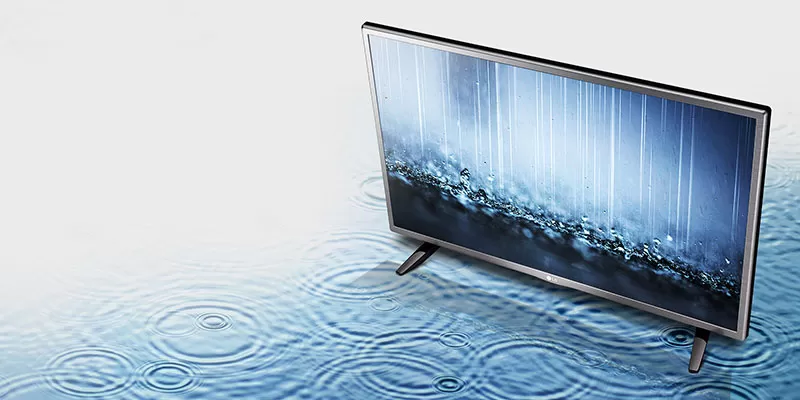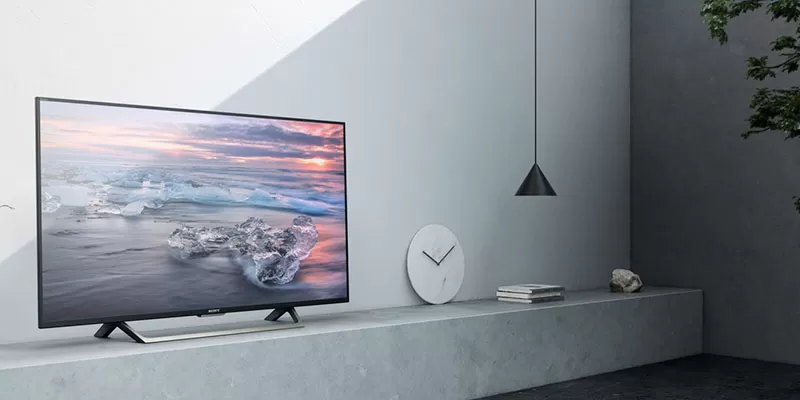
Compare Direct LED and Edge LED
Direct LED and Edge LED are ways to place the matrix backlight LED panel. They differ in the location of the LED elements. In the first case, the LED panel is located directly behind the image forming one, in the second — along its edges (actually — to the side of it).
Both of these technologies are used in televisions and monitors. And the difference between them lies not only in the design, but also in some operational capabilities.
To understand what is better to choose, consider these types in more detail.
How the Direct LED backlight works

The screen, equipped with Direct LED, is arranged “like a sandwich”, that is, it consists of several main layers. The first, the rearmost, is directly the LEDs. They can be located both quite «often» and «rarely» depending on the TV model used.
The second layer is the image panel itself. It is made on a translucent base so that the light from the LED elements can penetrate through it.
And the third is a protective plastic film or glass.
The main advantage of this technology is the possibility of local dimming. In this mode, some of the LEDs are turned off, creating a richer black color. The dynamic contrast ratio of the display becomes huge, up to 1,000,000:1 or — on some monitor models — even more. On TVs with rear LEDs and support for local dimming, it is very convenient and pleasant to work with dark backgrounds or watch movies that have many scenes in the dark.
However, local dimming is not available on all backlit TVs and displays. It is recommended to check with the seller before buying.
Advantages
-
High contrast, especially dynamic;
-
High brightness;
-
The uniformity of brightness and the absence of «illuminated» areas.
Flaws
-
High power consumption — a lot of «current» is spent directly by the LEDs;
-
The large thickness of the TV or monitor itself — in addition to the fact that the matrix itself is quite thick, it also needs to somehow implement cooling radiators;
-
Noticeable input lag, which can be 100-150 ms;
-
The input lag is due to the fact that before displaying the image, the TV needs to build a “picture” map, taking into account the location of the LED elements. This takes time. Moreover, the cheaper the TV or display, the more noticeable its input lag, since a productive processor for processing is not cheap.
How Edge LED lighting works

Edge LED is somewhat simpler. The panel of pixels that create the image is on a reflective white or silver substrate, and the LED panel is located on its sides. Thanks to this, you can significantly reduce the thickness of the TV itself or the display.
The main disadvantage of side lighting is the uneven distribution of brightness and the appearance of «lights». They can be seen on both light and dark backgrounds. Lights «gather» at the edges and corners of the screen — where the LEDs are located directly.
So, on dark scenes, the “picture” in the corner of the TV screen will appear dark gray. And on light saturation at the edges will be much higher than in the center.
Advantages
-
The small thickness of the matrix — and, as a result, the TV itself;
-
Small input lag, which can be less than 10 ms;
-
Sufficiently high levels of brightness and contrast (especially static).
Flaws
-
Uneven distribution of brightness in some models;
-
The appearance of noticeable «glare» at the edges and corners of the screen for some devices.
Despite the possible «glare», the minimum input lag is practically a «killer feature» for gaming monitors. This will especially appeal to gamers who will see every object on the map in dynamic competitions.
In addition, TVs with side-mounted LED elements are really ultra-thin. In 2017-2018, several home TV models with a thickness of about 5 cm or less were presented, including those with a separate computing unit. And these TVs, which are thinner than the picture, are equipped with just such a matrix.
What’s better?
There is no single answer to this question. And it’s not just the differences between technologies. Often the quality of the matrix itself varies between different manufacturers.
-
So, for example, the author of this material has a TV with Direct LED at home. However, local dimming technology is not implemented in this model, so in the evenings the screen turns into a spotlight that illuminates the entire room at any setting.
-
Direct LED is only good if it is complemented by local dimming. This helps to increase contrast (dynamic and static) and also makes scenes more cinematic.
-
Edge LED is good if the developer of the screen itself took care of the uniformity of the glow. Otherwise, the «lights» at the corners will begin to irritate.
-
Thus, if you need to choose between these two types, it is better to go to the store and see for yourself which type of TV or monitor you like best.
Добавить комментарий
Для отправки комментария вам необходимо авторизоваться.